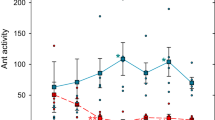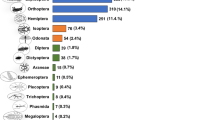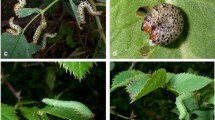Abstract
ON the subject of “ant-mimicry” Mr. Uvarov states1 on McAtee's authority, “that more than three hundred species of American birds (out of the total number of about eight hundred species including non-insectivorous ones) feed on ants and some of them consume thousands of individuals.” He does not seem to have noticed the consequences of McAtee's method in tabulating “the total number of identifications...from these stomachs, counting those of whatever degree, once for each time identified, irrespective of the number of individual specimens concerned”2 (p. 7). Therefore a bird's stomach containing a single ant or a very small number, liable to be swallowed accidentally with other food, would lead to the obviously absurd conclusion that the bird feeds on ants. A woodpecker's stomach containing 2,000 ants (p. 93) supplies evidence which, on this system, is of no greater value than a stomach containing a single ant. It is much to be regretted that McAtee, with all this vast material before him, did not publish all the available data which would have enabled us to know more of the real and habitual enemies of ants as well as of other insects. Mr. H. B. Cott has done this work admirably in his paper3 on the tree—frogs of the Lower Zambezi. Here we are given incontrovertible evidence that certain species regularly feed upon these powerful and aggressive insects. But who doubts that they have many enemies ? Yet it will, I think, be clear to anyone who reads Mr. C. Elton's interesting paper on “Territory among Wood Ants”, that insects mistaken for ants in Dr. T. G. Longstaff's bird sanctuary at Picket Hill would, on the whole, be benefited by the resemblance and that the chance of being eaten as an ant by the green woodpecker would be a risk well worth taking.
This is a preview of subscription content, access via your institution
Access options
Subscribe to this journal
Receive 51 print issues and online access
$199.00 per year
only $3.90 per issue
Buy this article
- Purchase on SpringerLink
- Instant access to full article PDF
Prices may be subject to local taxes which are calculated during checkout
Similar content being viewed by others
References
NATURE, vol. 130, p. 697, Nov. 5, 1932
Mithsonian Miscellaneous Collections, vol. 85, No. 7, Washington, 1932
Proc. Zool. Soc. Lond., p. 471; 1932
Journal of Animal Ecology, Vol. 1, No. 1, p. 69, May 1932
Zoolog. Anzeiger (Wasman-Festband), 1929, Akademische Verlags-gesellschaft m.b.h., Leipzip, pp. 79–86
Linn. Soc. Jour.,—Zool., vol. 26, p. 595; 1898. Figures illustrating the diverse methods by which the resemblance is produced are given on pp. 589–594
NATURE, vol. 130, p. 202, Aug. 6, 1932.
Trans. Ent. Soc. Lond., pp. 287–584 1902.
Linn. Soc. Jour.,—Zool, vol. 33, pp. 203–385 1919.
Tran. Ent. Soc. Lond., pp. 1–105 1921
Author information
Authors and Affiliations
Rights and permissions
About this article
Cite this article
POULTON, E. ‘Protective’ Adaptations of Animals. Nature 130, 848 (1932). https://doi.org/10.1038/130848a0
Issue date:
DOI: https://doi.org/10.1038/130848a0



